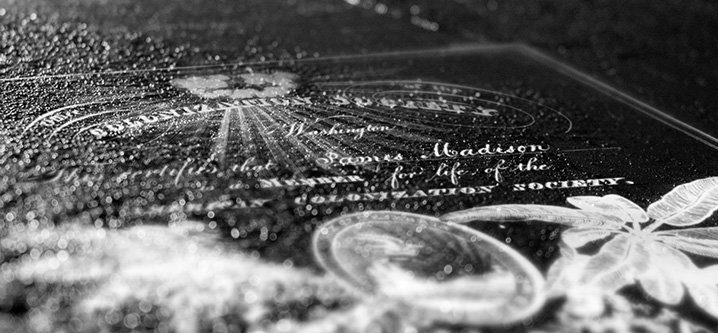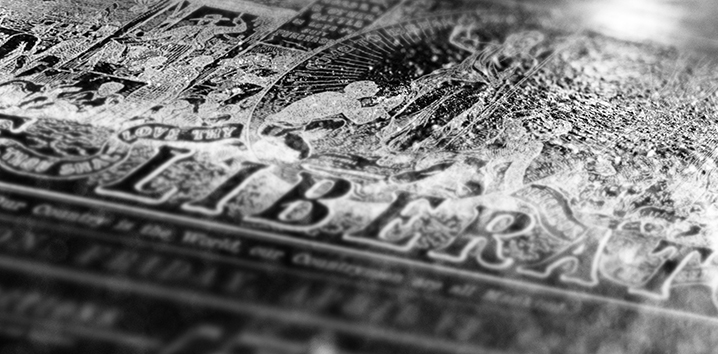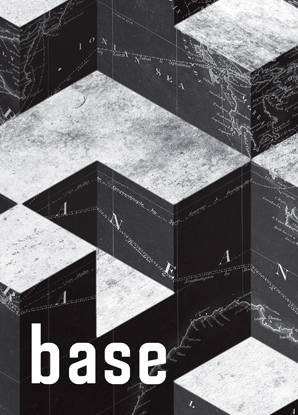In September 2000, Anthony Browne penned a sobre report for the Observer newspaper entitled “The Last Days of a White World”. Browne, latterly an advisor to Boris Johnson during his time as London mayor and now head of the British Bankers Association, informed readers that “40,000-year-old indigenous white populations” of Europe were soon to become minorities in their own lands. The report is written with the objective restraint of a journalist who has held senior political and economic briefs at the BBC, The Times, The Daily Mail and The Spectator. Browne quotes liberally from Far Right nationalists, sitting politicians in the US and Germany, and black and Asian British journalists and commentators, each with different takes on the demographic changes brought about by South to North migration and divergent birth rates.
What Browne describes with seeming neutrality is what might now be familiar to people as the “White Genocide” meme prominent in far right online networks. Leftist professor George Ciccariello-Maher found himself the target of both online and mainstream media attacks when a tweet he made welcoming “White Genocide” was picked up and circulated, leading to a coordinated campaign of complaints being sent to Drexel university where he works. Leaving aside any judgement on the effectiveness of the satire, what we do learn from this case is that some liberals took the “white genocide” trope seriously, as a form of hate speech, rather than recognise the perversity of its construction, which amongst other things imagines the coming death of the “white race” at the hands of multiracial relationships and mass immigration.
Never one to miss an opportunity for self-promotion was “Alt-Right” Klansman, Richard Spencer, who immediately appealed to Drexel students to bring him in. Spencer has publicly called for a 50-year moratorium on “non-European” immigration to the United States, “[They] have got to go home again,” he said. “They can connect with their real identity… reconnecting with who you really are for a Mexican-American would be about being in Mexico. For an African, it would be about being in Africa.” What Spencer refers to as “race realism” states in common sense tones that everyone has somewhere they belong, that tightened controls on immigration and increased deportations – such as the recent “Muslim ban” – are good for immigrants too because they can only truly flourish in their “natural homes”. Such logic is redolent of the 19th Century Colonization Movement in the US which saw sending slaves and free black people born in America “back to Africa” as the only solution to the problem of racial slavery in America. Advocates of this popular cause included Presidents Jefferson, Madison, Monroe and Lincoln, whose airbrushed histories have not been lost on the Spencer-affiliated journal, Radix, which has been at pains to point out that the Founding Fathers were all racists.
The naturalisation of arguments about the civilisational threat posed to the West by “Islamisation” or by immigration in general, while not couched in the most explicit lexicon of white nationalism, have nevertheless gained traction in recent decades among large parts of the right but also many liberals and even leftists. Often framed in a narrative of decline and decadence, the objects of critique are the same: “multiculturalism” and “cultural relativism” have led European nation-states to lose their identity and the continent itself to lose its moral fibre and grounding in Enlightenment principles, while the corrosive force of immigration and “globalism”, particularly of confident and aggressive Muslims, pulls it down from within.
Recent essays from environmentalist Paul Kingsnorth and former editor of Prospect magazine David Goodhart join the canon of writers announcing that they’ve been mugged by reality and left “the Left”, Goodhart for a “post-liberal” progressive racism and Kingsnorth for a sort of National Trust proto-fascism. Both men react against trends they ascribe to liberalism or the Left (which they conflate), try to position themselves as tribunes or translators of a “white working class revolt” and root their politics in a defence of place, culture and tradition – a benign nationalism to shield social cohesion (and, for Kingsnorth, “nature”) from the depredations of “globalism” and “multiculturalism”.
Alana Lentin and Gavan Titley have written about how the imagined “failed multicultural experiment” has been a vehicle through which to “launder” legitimised racisms via the language of religion, non/integration and culture (as if “race” and culture haven’t always been interlinked in the history of racism). Seeing as multiculturalism doesn’t refer to any clear and consistent state project, the term instead acts as a signifier. The “failure of multiculturalism” is a means through which to attack both immigrants who may yet come as well as those already here. The term “multiculturalism” thus becomes a mobilising point to undermine the reality of “lived multiculture” – i.e. the reality of human beings from different parts of the world sharing the same city or town.
Mobilising around this narrative schema was ex-EDL leader Tommy Robinson, after the recent attack on Westminster Bridge. He immediately showed up at the scene to garner mainstream publicity and indifferent journalists, hungry for filler, generously reciprocated. This was followed by the viral condemnation of a woman wearing a Hijab pictured walking past a wounded victim, based on a still image. Finally compounded up by the spectacular hyperactivity of the state, as the twelve people arrested in the days following the attack were all released without charge. Each terrorist attack, every concocted controversy about “freedom of speech”, proposed referenda to ban burqas, or minarets, or to leave the EU, is seized upon as an “event”. Political actions following these “events” and their endless mediation present opportunity structures for advancing racist causes and violence, to further cement ideas about what Islam is, who all Muslims are, why immigration is bad or how “political correctness” makes flaccid the institutions of nation and state.

Lentin and Titley call this tapestry of narratives “recited truths” – stories are constructed around what multiculturalism is, who it has benefited and how each Western country’s experience of its failings are cumulative and directly related. Every next “event” mobilises the last so that experiences of different (perceived-as-white) Western nation-states become unified by a civilisational threat narrative. This discourse is most prominently mobilised by populist racists like Nigel Farage, Geert Wilders and Marine Le Pen as well as various journalists and academics, but this plane of thinking is far more ordinary than is conveniently perceived. David Cameron, liberal commentators, ex-leftists, Angela Merkel, all agree that “multiculturalism has failed”.
Lentin and Titley give us room to consider the pivotal importance of “multiculturalism”, not as a progressive virtue, but as an abstract obfuscation of race and class antagonisms, which has been repeatedly mobilised to advance nationalist sentiments. What we are witnessing today is the eclipse of coded racisms and the return of confident racists, though they did not come magically out of nowhere. The general incapacity of Western economies to manage a crisis that has its roots in the unraveling of post-war regimes of accumulation has left the door ajar to a far right international which mobilises all the racist configurations of the Western state for enhanced political manoeuvring. In this way, we tend to agree with Endnotes collective that the protracted crisis of capitalism we are facing is tied to a general inability of capital to absorb relative surplus populations thrown out of production by cyclical rounds of automation and deindustrialisation, since the crises of the 1970s. This is the material underpinning to Western national economies: financialisation and structural unemployment in the capitalist heartlands, accompanied by the political result, increasing authoritarianism. Central to politics in recent times has been a policing of the increasing precarity of the wage-relation itself, as a growing surplus of people begin to stand outside this relation, though continue to depend on the wage – or indirectly, debt – to garner a living. After the financial crisis of 2008 and 2009, this tendency has merely deepened, rather than promise the abridgment of new social movements. Though how we got here is not always so clear and can be near impossible to understand under the intense hyperventilating of the news cycle.
In the British parliamentary sphere, specifically, resurgent social democracy remains embryonically attached to a robust faith in future rounds of capital accumulation, despite a general consensus from ultra left communists to Former US Treasury Secretaries that this is unlikely. In any case, the revival of capitalism is not desirable or possible, given the irrationality of a system based on blind producers responding to market signals, and the metabolic limits to this global contagion of commodity fetishism. The political armature of resurgent British social democracy, meanwhile, remains immobilised by the temporal scrum of spectacular media and moral sentiment, which is intensified by a commodity news form prone to short-winded assessment.
As we both reside in the shallows of the British imperial state, the British context is as good a place as any to tunnel into the dynamics of the present crisis of capitalism. Especially since after Brexit, the racialised character of the crisis has sharpened. Though we find little motivation to mourn the depressing features of the present through an obsessional critique of “evil” characters or sham governments, while hoping for better times through the spirit of times passed. Following up on the critical bearing Lentin and Titley develop through the ever-important mobilising object of “multiculturalism”, there is a need to recognise – and in what ways – fascism grows out of capitalism and liberalism, including the residue of its ‘progressive’ side, social democracy.
In this vein, we turn to the writing of Ambalavaner Sivanandan who in particular gives us a historical transition to understand how class antagonism is mediated by race. Thereby providing an essential starting point to unpack the peculiar British combine of racialised violence, bourgeois economics and imperial jamboree, which weedles itself into the half light of 2017.
In his writings on post-war labour, race and class, Sivanandan makes the British state a central focus of his analysis. The British state, unlike many other European states, could call on the migrant labour of British colonies and former colonies in the Caribbean and the Indian Subcontinent – to fill labour shortages, especially in public services, infrastructure and the most unappealing, gruelling jobs, which were not strongly affiliated to union memberships. Though as competition for work increased and working class communities were immiserated, they were also stratified by race. Sivanandan shows how the British Parliament responded by making settlement and citizenship progressively harder to obtain, ensuring the state management of racism became institutionalised, while political measures for “integration” and anti-discrimination were introduced to alleviate the effects.
Sivanandan notes a particular change in the form of post-war immigration from 1962 onwards, when the state restricted the admission of Commonwealth immigrants to those who had employment vouchers. This allowed the state new controls over the conditions of life for migrants, whose citizenship and rights to social welfare would then be tied directly to their capacity to labour. What Sivanandan noted as an “institutionalisation of race” opened up secondary potentials for super exploitation by landlords, bosses but also unions, which could more easily subordinate these lower tier workers to the priorities of institutional or individual self-preservation. This racialised tier of labour was then shaped through “race relations”, which intended to mitigate the economic need for flexible, seasonal and contractual migrant labour against racial antagonism between “indigenous” and “black” workers, including competition for work and housing.

The concept of “race relations” pointed to a consensus formed across Westminster parties that black people (Sivanandan refers to all colonised African and Asian peoples as “black”) were a problem and that immigration control was needed to limit their numbers (supposedly for the good of immigrants already in Britain). An example of this approach to “race relations” was a policy of 1965 stating that no school could have more than a third immigrant children making up its student body. Immigrant children were bussed to schools further away (“indigenous” kids were never bussed to other schools), making it clear that the state saw immigrant children as a problem which could be solved by ensuring their minority status through legislation and showing white parents that their prejudices were a priority. Increased restrictions were always accompanied by measures to encourage integration/assimilation as well as some to supposedly ward off discrimination. What Sivanandan returns to again and again during this period is how the state must balance its role of superintending cheap labour-power in the form of immigrants – cheaper because they grew up elsewhere and they were entitled to fewer rights and benefits, so they could be used up and thrown away – against the state’s need to maintain social control over labour in general. Two needs that didn’t always align.
The language and context of racism changes over the course of the 1980s and 1990s through new, more comprehensive policies to encourage “integration” and fostering the growth of a black middle class – though historical continuities from the 1960s racialisation of migrant labour persist. As a generation of migrants settled, and the children of migrants were then born in Britain, the relations of class society stratified racialised communities and new, more bourgeois, interpretations of antiracism also materialised. The dominant forms of antiracism in the 1970s and 1980s largely consisted of struggle against the state, the police, landlords, bosses, aimed at transforming social relations. State co-option of this period of rebellion and resistance through the language of “diversity”, individual social mobility and aspiration, initiated a decoupling of “race” from class, which had been relationally entwined for decades. A division between good and bad immigrants, violent policing of boundaries not to be transgressed and a constant process of separating new from settled waves of migration has since prevailed.
Against the grain of liberal democratic appeals to ‘post-racial’ unity, Sivanandan connected the era of “equal opportunities” – which Lentin and Titley examine through the signifier of “multiculturalism” – to an intensification of the processes and logics of state racism, now trained upon different social groups. ‘Xenoracism’ for Sivanandan is a racism that coheres around newcomers and “don’t belongs” – the Greek “xeno” translating as alien or strange. New migrants and asylum seekers must prove their worth, economically, but also prove themselves worthy of the national imaginary. While towards the bottom of the pecking order, the Roma and unemployed or homeless migrants are priority targets for deportation.
As Arun Kundnani argues with great clarity in his book “The Muslims are Coming!”, the 9/11 event came to largely define this specific period of race relations and provided massive opportunities for pervasive narratives of nation and nationhood. Where once the Jew of the 19th and 20th centuries was the unwanted, unassimilable, rootless and rumoured-to-be disloyal subject of the European nation-state, the Muslim has become the hard target of state repression and surveillance. This doesn’t mean to say that the persistence of anti-blackness as the structuring lodestar of racism can be in any way minimised. Indeed, the most important contribution of Kundnani’s book is his appraisal of how Black Power movements in the 1960s and 70s were historically intertwined with people of Muslim faith. This history is obscured because after 9/11 it was impossible to be anti-capitalist and Muslim without also being suspected of being a terrorist. That represents the disciplinary principle of the “Prevent” policy operative in British schools, colleges and universities today, which promotes social cohesion, while obliterating whatever potential was left in these institutions for radical dissent, especially for people of colour. The Muslim label, abstractly conceived, acts as a signifier and cipher which substitutes “race” for religion, when in actuality the two are continually conflated. All the while police and state violence are meted out to black people in Western countries hugely disproportionately, citizen or not.

The divestment of “race” into a new legislature of different races and ethnicities, which ran parallel to the expansion of the service economy, was thought to be a sign that Britain could shed its colonial history and the “rivers of blood” of the bad old days, but only substituted this racial animus (to the extent that it actually did) with a repressed authoritarianism that demanded newcomers were to be both “tolerated” and relentlessly interrogated, or just silently deported in their thousands. Systematic Islamophobia and xenoracism was the reality of the “post-racial” consensus, especially post-9/11, cultivating spores of conspiratorial actors and “clash of civilisations” commentators – and their careers.
For UK parliamentary heavyweights after the financial crash, the unprecedented collapse of stable liberal oppositions in Europe ensured “immigration” became the central cross-parliamentary yardstick of competition. Against the consensus over austerity, which was something tautologically explained by the need to bring down the deficit, most at stake in Britain for parliamentarians of these years was immigration. Especially for a Labour Party hoping to stem their slide into obscurity. Underpinned by allusions to the “legitimate fears” of “working people”, the “progressive” side of this argument, coming from Labour shadow Home Secretary Yvette Cooper, wanted an “honest conversation about immigration” to correct the past abuses of the system. Set against the fallacious premise that – in a country boasting a high technology border regime – “it is a serious problem that Britain still can’t count people in and count people out”, Cooper jealously attacked then Home Secretary Theresa May’s record on immigration figures, joining in with politicians of every stripe to prove herself tough enough to get the numbers down. This tit for tat of post-crash immigration duels has now completely unraveled, along with the duplicitous theatre of the Labour Party, leaving only the bare bones of the imperial corpus. Without apology or appeal to diversity, all that’s left is the giddy speculations of racist politicians and commentators accounting for the categories of bodies amenable to Brexit Britain.
The particular expression of political authoritarianism in Britain today, animated by nostalgia for imperialism and wartime national unity, should not distract from the historical relationship between race and class, state and capital, which writers such as Lentin, Titley, Sivanandan and Kundnani have helped to acutely dissect. Contemporary appeals to national unity and British sovereignty, alongside straw-man critiques of multiculturalism, however jingoistic, are actually proving necessary for the state to manage a protracted crisis of capitalism. The way Sivanandan describes the intersection between liberalism and fascism from the perspective of the 1960s, mediated through the abstract principle of “freedom of speech”, shows much of the language has changed, but the political mobilisation of race has been part and parcel of how British liberal democracy mediates class antagonisms:
“By invoking their democratic right to freedom of speech… by claiming equal TV time as the other electoral parties and by gaining ‘legitimate’ access to the press and radio – they would propagate the cause of denying others those freedoms and legitimacies, the blacks in the first place. They would move the whole debate on race to the right and force incoming governments to further racist legislation – on pain of electoral defeat.”
In our introduction, we noted how Anthony Browne mourned the end of a European continent that had been “white” for 40,000 years. It is clear that Browne is no outlier or fringe operator, he has made a good career moving between media, political power and finance but always in mainstream institutions. His writings have been praised by the British National Party and sold on their website, before a career in mayoral politics and the financial sector. His assumptions are not special, however, but overlap with many of the logics at play in current political developments, which work by obscuring the historical passage of capitalism through colonialism. Indeed, Browne’s coded pre-9/11 foray into illustrations of “white genocide” anticipate post-crash far right electoral movements, which organise in much the same way, though without the same need for political restraint. There are however clear differences today. The most successful fascists can currently be found in the United States and they have been able to amplify fellow Anglophone satellites with much more veracity than the BNP could muster through sympathetic liberal establishment figures like Browne. Though unchanging, from Sivanandan writing in the late 1960s on the formalisation of the BNP and National Front to Nigel Farage and the “alt-right” Nazi youth, are the gamut of liberal media outlets willing and ready to give these views oxygen.

The far right have been sycophantically courted by journalists and an increasingly desperate petit-bourgeois commentariat, who stand tall on defence of free speech, or fabricate the human story behind the fascist. Seeing Richard Spencer get punched in the face (whilst doing yet another interview) was too much for some commentators, who could see nothing but leftist aggression. This immobilised spectacle of liberal culture not only extends the purview of fascist newscraft, but perhaps more importantly obscures the history of their ideas. The seductive entrée of nativist rebellion, irresistible for liberal commentary, fails to note the fundamental conformity of these movements, which merely seek to extrapolate, accelerate and proudly centre what seated parliaments have been doing for decades.
To the “race realist”, national borders aren’t scars of colonialism carved out by war, imperialism and revolution, they mark the boundaries of timeless bonds of blood, soil and culture. “Race”, for fascism, has no history: it is not ascribed by power, ideology, legal systems or labour relations. “Race” is a given, handed down through the ages, conferring social meaning and innate difference. The typical charge is that multiculturalism has fractured European societies, hasn’t sufficiently “integrated” newcomers and has allowed communities to become segregated, damaging social cohesion. But this evocation of social cohesion is a mythical conjuring. It summons up a society or community of the barely memorable past where gender, class, racial and spatial division never existed, whilst affirming racial difference through the historical categories of colonialism and bourgeois political economy.
What Marx referred to as the production of “relative surplus populations” – that is, labour relative to what capital needs, rather than ‘naturally’ surplus – is an advantage and problem for capital. The perverse irony of the capitalist mode of production is that it is the supra-managers of capital – mostly white men – and the super-exploited – majority women, non-white – that move around the most. The former to search out, dispossess and exploit the latter, before moving on when labour gets too riotous and thus expensive to manage.
For the imperial states, country-hopping capital is necessary to expand taxation and influence. Though what is specific about today is that the imperial nations are struggling to manage the people it doesn’t need in its own heartlands. As Sivanandan shows us, this was a regular problem for the British state in times of economic contraction, which demanded new innovations of state technology and policy that could more closely shape and regulate flows of migrant labour from the Commonwealth or balkanised European regions. But in a protracted crisis of capitalist accumulation, where green shoots never surface, except through releasing fictitious capital through pensions for property investment and tech speculation, the state must mediate the more general immiseration of the workforce. Against the expansion of a national prison population and the law and order ticket, invocations of nation, culture and the ‘death of multiculturalism’ then become crucial to mediate the political fallout of these economic contradictions. This labour problem is then reconciled by setting mutilated “natives” – be they workers, estate agents or Surrey brokers – against the degraded world of the strange and foreign.
The mythical cohesiveness of nation serves only as an imagined obverse to the particular focus of difference in the dominant frame – the racialised, the Muslim, the immigrant, the asylum seeker, are foregrounded as the antagonist of economic crisis and threat to stability. There is no non-reactionary vision of national cohesion in the context of political economy. As a simple priority, “lived multiculture” has to be defended, in thought as well as practice, which means every racist deportation fought, communities of resistance and solidarity deepened, and the borders enforced by state and capital exposed as divisions of who lives and who dies.
African American communist Harry Haywood wrote of “race” in 1930: “Race, as a social question, exist[s] only for the ideologists of the bourgeoisie and in the minds of those deluded by them.” [This ideology existed to imbue] “differences within the human species, such as color of skin, texture of hair, etc [with] social meaning,” [in order to claim] “the existence in nature of master and slave races.” Race is a category of bourgeois reality, but racism plays as salient a role as ever in ordering and dividing societies, and structuring global flows of capital and labour.
In the context of this systematic racialisation of capitalist crisis and an emboldening of the politics of white masculinity, racial/sexual/gender minorities are constantly in the dock for derailing supposedly general or universal political struggles in favour of their particular interests or individualism, as too preoccupied with identity or “virtue signalling”. The term “identity politics” is almost always accusatory. This characterisation erases the fact that these struggles for liberation or justice or recognition challenge the heart of the general (the state, prevailing modes of accumulation and reproduction) which are largely treated as objective facts of life. “Race”, which has been our main focus, is “depersonalised” and systemic, and yet, personifies human beings. This ‘identity’ is not freely appropriated by any one person; to be raced is an ascription reinforced from the outside. The need for such organisation of “races” results from a history of social control that the capitalist state has used to supplant class antagonism. While consistently, for decades, groups who are most marginalised and oppressed in Global North countries have been at the forefront of the most radical social struggles that have forced concessions from the state and challenged and troubled mainstream society in order to bring about change.
Contra perceptions in the West, Global South to North migration is actually very low owing to it being massively & lethally restricted. It must be considered low especially in the context of imperialist wars and climate change fuelling record levels of displacement and migration, the vast majority of which remains internal to the Global South. The production of relative surplus populations inherent to capitalist development, that sees both agricultural labour expropriated from access to means of subsistence as well as wage-labour functions being continually automated, are leaving growing sections of the global labour force only partially, casually or seasonally needed by capital, if at all. This tendency has proven to be highly gendered and racialised. The trends suggest that the crisis symptoms we are living through will only intensify and the catastrophic effects will be distributed as unevenly as the wealth has been abstracted from material life. To understand the causes and to struggle against them at their root will be the struggle of our lifetimes.
By Michael Richmond (@Sisyphusa) & Alex Charnley (@steinosteino)
